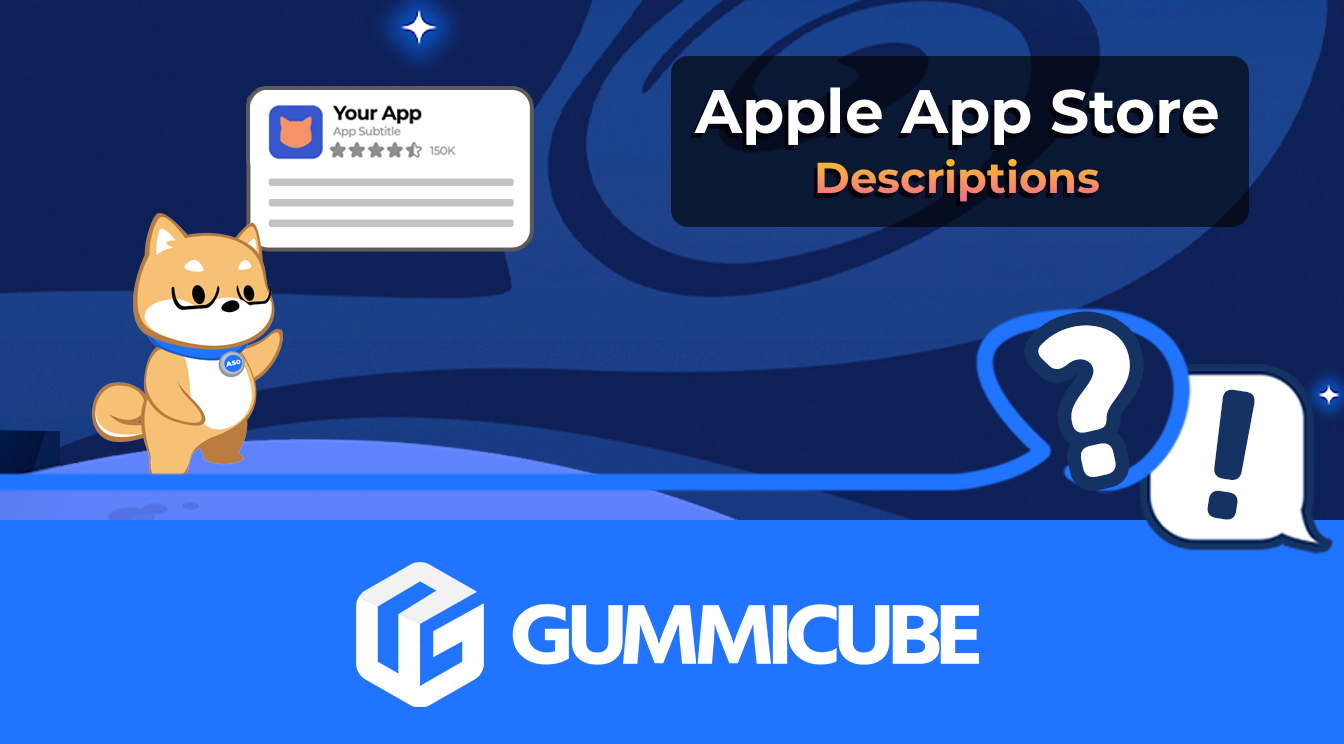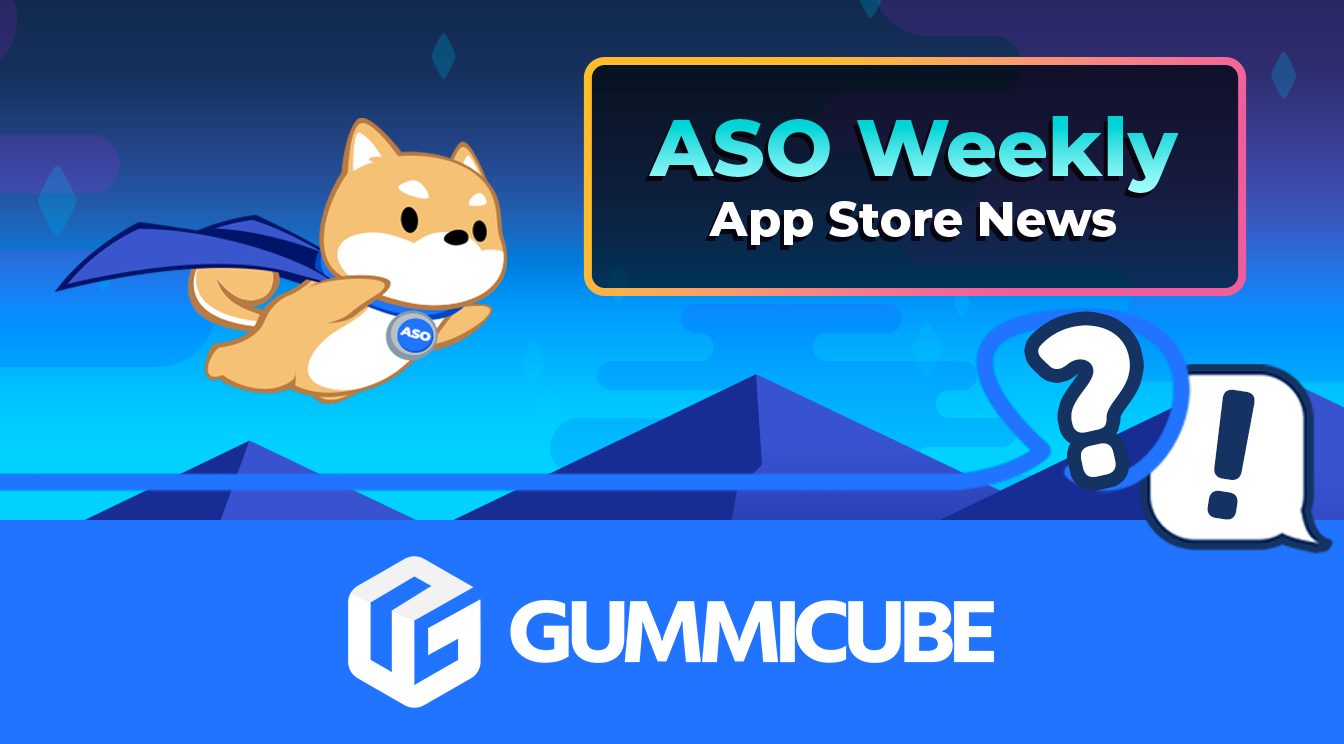
How to Write an Apple App Store Description
Posted on July 17th, 2024
Learn how to approach App Store descriptions the right way so you can effectively engage and convert users.

When optimizing your app for the App Store, it’s important to choose your keywords wisely. Your keywords will determine what searches your app can show up in, and searches make up 70% of app discoverability, so the importance of keywords for App Store Optimization cannot be overstated. With that in mind, here are some App Store keyword rules and best practices you’ll want to know when optimizing your app.
On Apple’s App Store, you’re given three areas for declaring keywords: the title, subtitle and keyword bank. Each of these has a strict character limit, so in order to fully utilize the space provided, you should try to find structures and combinations that use as many of those characters as possible:
It may require a little mixing and matching to find the best combinations – the user-facing title and subtitle need to include valuable keywords while remaining coherent, while the remaining keywords can fill the keyword bank – but the goal is to fill the metadata space with relevant and valuable terms.
A keyword only needs to appear once in any of these fields for Apple to identify it as a keyword for the app. Doubling up on the same keyword in multiple fields will only waste space that could be used to increase the variety of keywords.
Apple provides a 30-character title space. While many apps use this for the name alone, those with shorter titles can and should include additional information after the title. This utilizes more keywords, thus freeing up space for the subtitle and keyword bank to use and provides customer-facing information.
For instance, if there’s a laundromat locator app called “Washer,” that title only uses six characters. If it were to turn its App Store title into “Washer: Laundry & Dry Cleaning,” this would use all 30 characters, help it target the high-volume “laundry” and “dry cleaning” keywords and let users viewing the app know what its purpose is. If the title tag looks like a list of keywords, Apple may reject it for keyword stuffing; it has to read naturally while containing the keywords you want.
Following the title, Apple has as 30-character subtitle space. This provides additional information about the app for users to see, but it’s also used for keyword indexation.
The subtitle should indicate the app’s benefits and purpose while focusing on important keywords. For example, the theoretical laundromat locator app could use the subtitle “Find a Laundromat Near You.” In this case, it reads like a coherent tagline while supplementing the title with new terms.
The keyword bank provides 100 characters for all other terms the app wants to target. This can be used for keywords that would sound out of place if used in the title and subtitle, variations of other keywords and so forth.
While the keyword bank provides more space than the title or subtitle, it is vitally important to use as much of it as possible. Keywords should be separated by commas, with no spaces added. Using both a comma and space will only take up character space.
When choosing your keywords, there are a few core guidelines you’ll want to keep in mind:
If a keyword is extremely relevant to an app, but no users are searching for it, the keyword will not provide much visibility in the search results. On the flip-side, if a keyword is popular but only tangentially related to the app, users may be less likely to download the app even if they see it in searches. A good keyword is one that users will use in searches and can directly connect to the app. If your app uses that keyword in its title or callout text on screenshots, that’s even better as it shows users a direct relation to their search query.
To find out what keywords are popular, you’ll need App Store intelligence software that can determine mobile keyword volume and user behavior. It also helps to research competitors and see what terms they rank for – this can provide valuable insights into what keywords you might have overlooked or uncover new, valuable terms that relate to your app.
Consider the competition around a phrase- Apple’s developer page provides this advice:
Consider the trade-off between ranking well for less common terms versus ranking lower for popular terms. Popular, functional terms such as "jobs," "text," or "social" may drive a lot of traffic, but are highly competitive in the rankings. Less common terms drive lower traffic, but are less competitive.
There’s an important balance to strike, but once you’ve identified the keywords you’ll want to target, you now know how to utilize the App Store’s metadata fields to best target them.
Overall, there are a few key aspects to remember when preparing your App Store keywords. Utilize the full space provided by the title, subtitle and keyword bank without doubling up on keywords. Keep the keyword bank separated by commas, rather than spaces. Make sure the customer-facing keywords from the title and subtitle are valuable terms that provide information about the app. Most importantly: research your keywords wisely and pick ones that will make an impact.
Choosing the right keywords can make a big difference for an app’s success, but knowing how to use them is important too. Understanding the App Store keyword rules can help you succeed at optimizing your app’s discoverability.
Want more information regarding App Store Optimization? Contact Gummicube and we’ll help get your strategy started.

Learn how to approach App Store descriptions the right way so you can effectively engage and convert users.

Learn how to grab your audience's attention through effective and engaging app store preview videos.

Welcome to this week’s ASO Weekly - The App Store halts gambling ads amidst outcry and the Apple takes a bite out of NFT app sales.